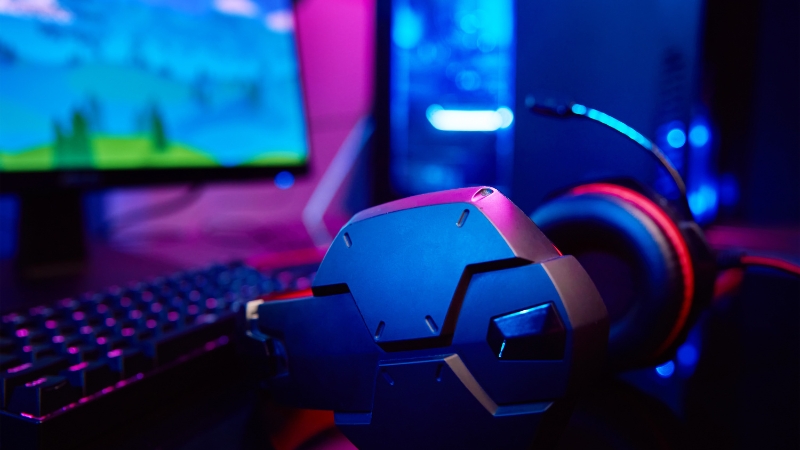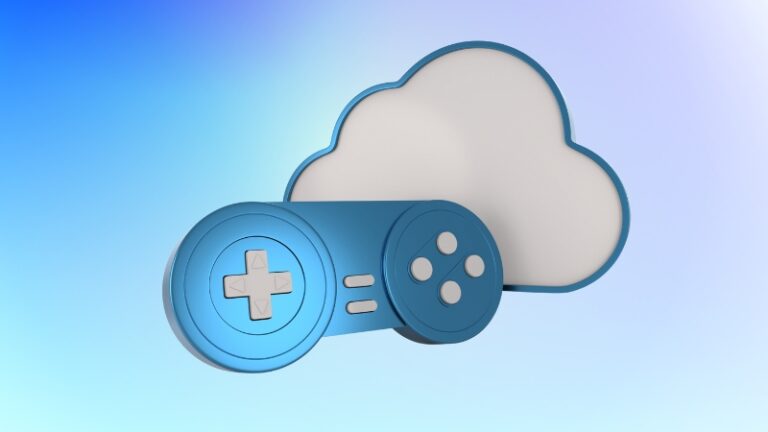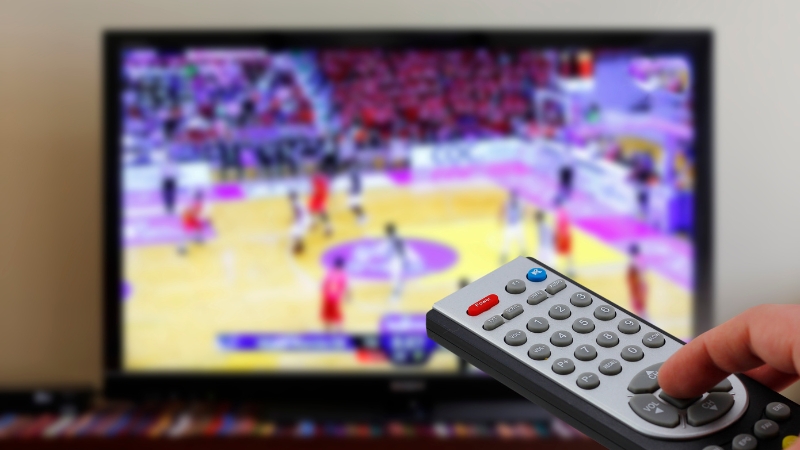High-end gaming PCs will no longer be a necessity for most players. As cloud gaming platforms mature, the heavy processing traditionally handled by powerful local hardware is being moved to remote servers.
All you’ll need is a solid internet connection and a subscription service, not a $2,000 gaming rig. High-end PCs won’t disappear, but they’ll shift into a niche role, used mainly by enthusiasts, content creators, and competitive eSports players, while mainstream gaming moves to the cloud.
Table of Contents
ToggleThe Old Model: Why Gamers Needed Expensive PCs

For decades, the performance of your gaming experience depended entirely on the power of your machine. Gamers had to constantly upgrade GPUs, CPUs, and RAM to keep up with demanding AAA titles.
Missing a hardware cycle often meant playing on lower settings, lagging behind friends, or skipping out on big releases entirely.
This cycle created a culture where serious gaming was often synonymous with serious spending. A new graphics card every few years, a better monitor, faster SSDs, it was an endless arms race. While enthusiasts enjoyed the tinkering, many casual gamers simply couldn’t justify the cost.
Cloud Gaming Flips the Model
Cloud gaming rewrites those rules. Instead of requiring every player to own a high-powered PC, the processing is done remotely in data centers filled with cutting-edge GPUs and CPUs.
Players simply stream the output, the same way we stream movies on Netflix or music on Spotify.
That shift means even a budget laptop, tablet, or smartphone can run titles that would normally push a gaming PC to its limits. The bottleneck is no longer hardware; it’s the quality of your internet connection.
Why Cloud Gaming Is Catching On
Cloud gaming isn’t just a gimmick; it’s becoming a practical choice. Here’s why:
Cost Savings
A modern gaming PC can cost anywhere between $1,500 and $3,000. On top of that, new GPUs or CPUs can cost hundreds of dollars each time you upgrade. In contrast, cloud platforms like NVIDIA GeForce NOW, Xbox Cloud Gaming, and PlayStation Plus Premium offer access to top-tier performance for just $10–$30 a month.
For many, it feels like swapping a huge upfront cost for a predictable subscription fee.
Play Anywhere
Games are no longer tied to your desk. Whether you’re on a TV in the living room, a laptop on the go, or even your phone during travel, cloud gaming follows you.
This makes gaming more flexible and more inclusive for people who don’t want (or can’t afford) a fixed gaming setup.
Server-Side Upgrades

Instead of stressing about when to buy the next GPU, cloud providers upgrade their servers. Players automatically benefit from those improvements without spending extra.
Essentially, your games are always running on “high-end” hardware, even if you’re streaming them on a basic device.
Latency Improvements
The biggest complaint about cloud gaming has always been lag. But with more data centers, faster compression, and widespread 5G and fiber internet, latency has dropped dramatically.
For many casual gamers, the difference between local and cloud gaming is nearly unnoticeable.
Internet Is the New Gaming Rig

With cloud gaming, your internet connection becomes the single most important piece of “hardware.” Smooth gameplay depends on speed, but also on stability and low latency.
Fiber is the gold standard, offering symmetrical upload and download speeds with minimal lag. High-speed cable internet can also deliver strong performance if it remains consistent.
And this is where most gamers start thinking seriously about their ISP. Reliable connectivity can make or break a cloud gaming session. Many users look into packages like Comcast internet plans when choosing how to support their streaming setup.
A plan with fast speeds and low latency ensures that demanding cloud titles run without stutter or dropouts, even at 4K resolution.
Cloud Gaming vs. High-End PCs
Feature
Cloud Gaming Platforms
High-End Gaming PCs
Upfront Cost
Low (existing device + subscription)
Very High ($1,500–$3,000+)
Maintenance
None – handled by provider
Frequent upgrades and part replacements
Performance
Tied to internet speed and server upgrades
Top-tier but requires ongoing investment
Accessibility
Anywhere, on multiple devices
Locked to one setup
Latency
Getting lower each year; it depends on the ISP
Near-zero when wired
Modding & Customization
Limited
Full freedom to tweak and mod
Longevity
Servers are continuously upgraded
Hardware ages and becomes outdated
The Human Side of the Shift
It’s not just about money or hardware. Cloud gaming is also reshaping gaming culture in ways that feel more inclusive. Friends no longer need to have matching rigs to enjoy the same titles together.
A teenager with a modest Chromebook or budget laptop can log in and stream the same AAA release that a professional gamer is playing on a $3,000 tower. That removes a barrier that used to divide casual players from hardcore enthusiasts.
Convenience is another piece of the puzzle. Long downloads, massive day-one patches, and running out of disk space have always been pain points for gamers. With cloud gaming, all of that work happens on the server side.
Updates are applied instantly by the provider, so when you log in, the game is ready to play. For players juggling jobs, school, or family responsibilities, this “instant-on” access means more time actually gaming and less time waiting.
There’s also the social element. Because cloud platforms work across multiple devices, friends can jump into a session from wherever they are, without worrying about technical limitations.
This accessibility is starting to shift gaming from being a high-investment hobby to something that feels more like a universally available form of entertainment.
Who Still Needs a Gaming PC?
High-end PCs won’t vanish. They’ll remain popular with:
But for the average gamer, the reasons to own a powerful rig are fading. Cloud gaming delivers the same access and nearly the same quality without the financial burden.
Bottom Line
@gg.sheed Do you use any Cloud Gaming Services today? 🤔 It’s amazing that we have the technology available to allow more people to game anywhere they want! Cloud gaming has really opened the door for people who do not want to buy expensive hardware but still want to play AAA games. My only wish is that somehow we can make the experience virtually lag free, but that may be impossible due to how slow wireless signals are compared to electrical signals used when gaming directly on a console or PC. Nvidia GeForce Now, Xbox Cloud Gaming, and PlayStation plus premium are all great services if you want to look more into cloud gaming! #techtok #pcgaming #xbox #playstation ♬ Aesthetic Coffee – Febri Handika
Cloud gaming is no longer experimental; it’s here, and it’s improving rapidly. The economics, the accessibility, and the convenience all point in one direction: high-end gaming PCs will become optional luxuries rather than essentials.
Most players will happily trade the stress of constant upgrades for a subscription model and a reliable internet connection. High-end rigs will survive, but only as a niche hobby for those who want the absolute best or enjoy building their machines.
For everyone else, the future of gaming is in the cloud.
Related Posts:
- Preparing for Baby’s Arrival - What You Need vs.…
- Why Do I Feel the Need to Buy YouTube Views?
- The Evolution of Remote Work and Global News Consumption
- Buc-ee’s Hours and Menu Prices for 2024 - Everything…
- 5 Most Common Lizards Found in Florida - All You…
- 4 Tips to Quickly Improve Your Gaming Skills in The Finals
















